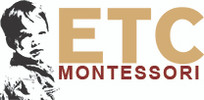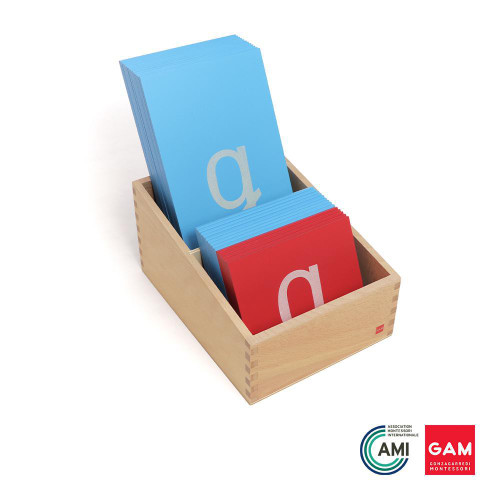Product Overview
Handwriting Lowercase Letters.
Research and development by Renee Jansen
Program Rationale:
The Common Core curriculum that guides schools today does not include requirements and proficiency standards for handwriting. In a Montessori environment, it is a skill that is essential. You will notice that we have focused exclusively on D'Nealian cursive handwriting so that we could eliminate the time, effort, and confusion created when students are asked first learn and then to “unlearn” manuscript and then to learn a new D’Nealian cursive handwriting.
As Montessorians, we have concrete tools to help students develop muscle strength and learn proper formation of letters. Our challenge in developing this program was to find and design tools and materials to use in the elementary classrooms. Our research sought to supplement these with additional materials that address both the students’ needs and the administrative logistics of teaching the curriculum. Our mission was to develop, adopt, and implement a cursive curriculum that could aid students with learning differences and accelerate the learning of all students.
The resulting program, presented here, includes all the materials required to make it possible to differentiate instruction, work for individual students, and allow them to move toward mastery based on their individual skills and development.
Cursive handwriting is taught through explicit instruction using a multi-sensory approach. Students use visual, auditory and tactile senses to complete individual letters with precise formation. This multi-sensory method offers access points to aide pencil grip, letter formation legibility and heightened literacy for cursive script and printed materials. Handwriting mastery that is automatic and comfortable offers students a sense of accomplishment and success as writers and readers.
The following points set this curriculum apart from the others that are currently in the Montessori marketplace.
Adaptable to a variety of age groups and levels
Most handwriting programs are designed for the first and second grade since that is perceived as the ideal time to make the transition from manuscript to cursive. However, because of the approach which we have implemented, teachers can actually use this program with older 3-6 students.
Lower-case letters are taught separately
Although the prevailing practice among several handwriting programs in the Montessori marketplace is to teach children the capital letters first along with their lower-case partners on the same page, we follow the ideas of Romalda Spalding and present the lower-case letters first prior to them being introduced to the upper-case letters. Upper case letters are used much less frequently than their lower-case partners. Furthermore, by introducing the lower-case letters first, we are instilling in each child the idea that the English language has specific rules which govern when upper case letters are to be used.
Practice writing is done on Narrow-ruled pages
Contrary to common beliefs, it is much harder for children to write on large, spaced lines than it is on narrower lined paper. Large, lined paper requires children to have greater control of the writing instrument to maneuver the larger space available to them. As research has shown (Spalding, 1990) the narrower spaced paper allows children to excel at their penmanship.
Letters are presented based on research to develop motor pattern reinforcement
Others introduce the letters in alphabetical order, and although knowing the alphabetical order might be important in using a dictionary, or thesaurus it is not efficient for learning how to write the letters. For this reason, we have grouped the letters based on similar motor development techniques. Our approach reinforces the necessary motor patterns.
Program Implementation:
Designed to be implemented in Lower Elementary. If you are looking for primary, please consider sandpaper letters or hollowed out letters. These tend to be larger and better suited for children’s developmental needs of that level.
Cursive letters are introduced and taught together in groups based on how the writing stroke begins. This (the lowercase section) is the first section in the sequence for teaching the cursive handwriting curriculum:
- Lowercase Letters
- Overhill and Back: a, o, c, d, g, q
- Uphill: e, i, u, w, j, p, r, s
- Uphill High: t, l, b, h, k f
- Overhill and Down: n, m v, y, x, z
- Practice Review Sheets
This is a full program based on theory and research, and it includes the following:
- One set of Acrylic hollow letters (lower case)
- One wooden tracers
- One pencil grip
- Teacher's manual
- One set of blackline masters for the Overhill and back
- One set of blackline masters for the Uphill
- One set of blackline masters for the Overhill and down
- One set of blackline masters for the final review sheets
- One container box for Acrylic hollow letters
Card size(s):
| Acrylic Hollow Letters | 2 x 3.5 in. | 5.08 x 8.9 cm. |
| Wooden tracers | 5 in. | 12.7 cm. |
| Pencil grips | small | small |
| Blackline masters | 8.5 x 11 in | 21.6 x 28 cm. |
SUGGESTED CONTAINERS
1 Card Holder with Rack for the books












